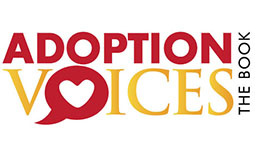Blended Families |
Before I talked about the issue a blended families, I am of the opinion that the show “the Brady Bunch”, did a tremendous disservice to people who were divorcing and then finding new partners. While there was some conflict in the show of course, it was mostly all those smiling families that you saw in the boxes at the beginning of the show. It seemed to even have a cult following since the people in the show, now grown adults of course, are often mentioned in the media.
So, to give some reality to this topic let me share with you a startling statistic. About 40% of first marriages, and 60% of second marriages end in divorce. When both spouses have children from a previous marriage, the divorce rate is 70%. Researchers hypothesize that this is because the marriage partners are so consumed with the children and the many issues of trying to get reluctant children to accept not only a new parent but new siblings as well, that their marriage suffers and there certainly is no honeymoon phase.
I first began to think about this issue of blended families as an adoption issue, whether it has an official adoption embedded in the relationship or not, when I came across a book called, “Strangers in the House: The World of Stepsiblings and Half Siblings by William Beer. He is a well-respected researcher who went to great lengths to look at this issue from a child’s point of view as opposed to all the popular literature that looked at it from the parents’ point of view.
I found the title chilling and so incredibly descriptive of what probably adds to the amazing statistic that I just quoted. While there are successful blended families, I think that’s statistic says there are not as many as you might imagine. There are also many families where the stepparent adopts the child, and the success of that endeavor depends on the motivation for doing so and the stepparents’ willingness to establish a close and loving relationship. It is also very dependent on the adults in the new marriage and how they handle the situation. As I read Sharon Roszia and Allison Davis Maxons’ book, “The Seven Core Issues of Adoption”, she concludes no matter how successful the adoption is, the child often feels a tremendous loss of a birth mother or birth father or both. It is as though those parents have been erased from the child’s sense of+ self and identity.
I am hoping that there are parents involved in blended families who will look at my book and see that the trauma and the sense of loss and fear experienced by most adoptees, are also felt by the children who find strangers in the house and have no idea how the situation is all going to work out. I think you can just sense the anxiety of a child in that situation. Will I be loved? Do I have to love a sibling or siblings I’ve never met? What about the original family structure of aunts and uncles and grandparents? So many actors in the scripts that even the adults have difficulty with the complexity, so you can imagine this from a child’s perspective.
I had an acquaintance years ago and she told me her story of blending families that I never forgot. She and her new partner both brought teenagers to the new relationship. They tried for a long while to make it work and found their marriage crumbling. They did something I think is brilliant, recognizing that not everybody has the resources to do this – they each took their teenagers home to their original house and lived apart. They dated during this time and waited for their teenagers to grow into young adulthood and then began living together again. I thought it was very thoughtful and though not everyone can afford to do this, it made so much sense to me.
I hope parents and blended families find my book and read my stories and think about their situation through the lens of adoption. I would also like to refer my readers to two wonderful books written by the same authors, Adele Fabre and Elaine Mazlish. The first one I mentioned in the last article, and it is, “How To Talk So Kids Will Listen & How To Listen So Kids Will Talk.” The second book is even more important for blended families, “Siblings Without Rivalry, How to help your children live together so you can live too.” I can’t say enough about these two books. They are wonderfully and clearly written and based on the teachings these two women have been doing for years. Please take time to read them.
